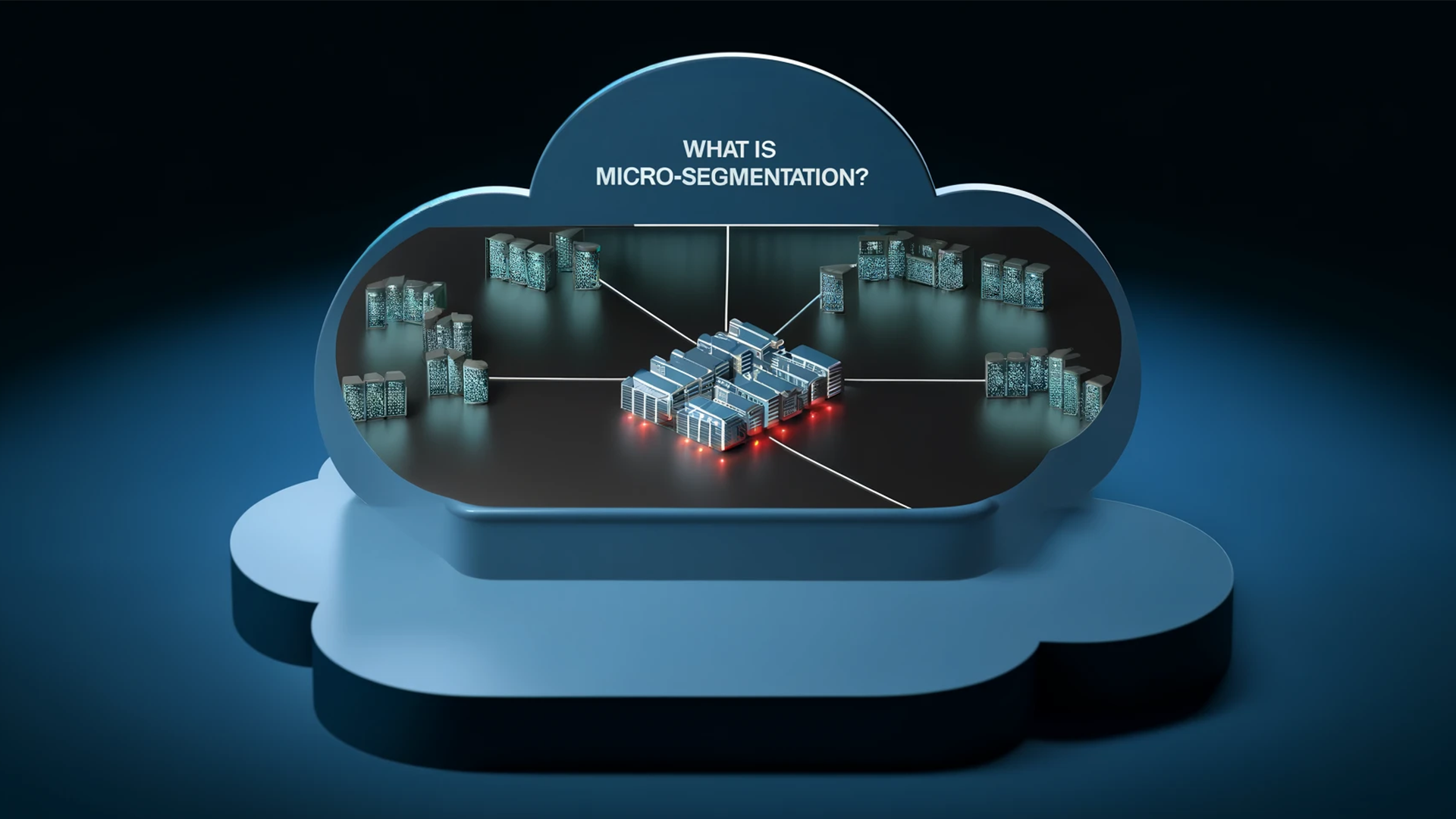
Thank you
Our team of industry domain experts combined with our guaranteed SLAs, our world class technology .


Get Immediate Help
In today's dynamic digital landscape, safeguarding sensitive data and defending against cyber threats has become increasingly challenging. Traditional security measures centred around perimeter defence need to be revised in the face of sophisticated attacks. However, emerging technologies like microsegmentation offer a robust solution to bolster cybersecurity defences. Let's delve into the key benefits of microsegmentation and how it can revolutionise your organisation's security posture.

Based on Attacks and Security:
1. Reduced Attack Surface:
Microsegmentation partitions the network into smaller, isolated segments, effectively shrinking the attack surface. By compartmentalising network resources, limits lateral movement for attackers. Even if one segment is compromised, the impact remains localised, thwarting attempts to penetrate deeper into the network.
2. Enhanced Breach Containment:
In the unfortunate event of a security breach, microsegmentation plays a pivotal role in containment. Breaches are confined to the compromised segment, preventing threat actors from traversing across the network and accessing critical assets. This containment strategy mitigates the fallout of breaches and safeguards sensitive data.
3. Improved Security Policy Enforcement:
With microsegmentation, organisations can enforce tailored security policies at a granular level. Each network segment can have its security policies aligned with specific application requirements and data sensitivities. This level of customisation enhances overall security effectiveness by ensuring that security controls are precisely aligned with business needs.
4. Simplified Security Management:
Automated policy enforcement streamlines security management tasks, alleviating the burden on security teams. By reducing manual intervention, organisations can optimise resource allocation and focus on strategic security initiatives. This results in more efficient security operations and better utilisation of personnel.
Based on Performance:
5. Increased Visibility and Control:
Microsegmentation enhances visibility into network traffic flows, empowering organisations to detect anomalies and suspicious activities promptly. With granular insight into each segment, security teams can swiftly identify and respond to potential threats. This proactive approach minimises dwell time and mitigates risks effectively.
6. Improved Regulatory Compliance:
Adopting microsegmentation aligns with various regulatory requirements and data privacy standards. By implementing robust segmentation practices, organisations demonstrate their commitment to data security and regulatory compliance. This not only ensures adherence to legal mandates but also enhances trust and credibility.
7. Scalability and Agility:
Microsegmentation solutions are inherently scalable and adaptable, capable of accommodating evolving security needs and network expansions. Whether scaling infrastructure or transitioning to new technologies, microsegmentation adapts seamlessly, preserving security efficacy without disrupting operations.
8. Application Security:
Microsegmentation is particularly invaluable for securing cloud environments and containerised applications. By isolating workloads and microservices, it mitigates the impact of vulnerabilities within individual applications. This compartmentalisation strategy enhances overall application security and resilience.
While microsegmentation offers significant benefits, its successful implementation requires meticulous planning, integration with existing infrastructure, and ongoing monitoring. Additionally, organisations must consider the initial investment and operational costs associated with deploying microsegmentation solutions.
In the context of microsegmentation and its benefits for organisations' cybersecurity, several Microminder services can be particularly helpful:
1. Security Assessments: Before implementing microsegmentation, organisations can benefit from thorough security assessments provided by Microminder. These assessments help identify existing vulnerabilities and areas of improvement in the network infrastructure, ensuring that the microsegmentation strategy addresses specific security needs effectively.
2. Network Security Solutions: Microminder offers comprehensive network security solutions that can be tailored to incorporate microsegmentation techniques. These solutions provide advanced threat detection, intrusion prevention, and real-time monitoring capabilities, complementing the microsegmentation strategy to enhance overall network security.
3. Data Security Services: Microsegmentation plays a crucial role in safeguarding sensitive data within segmented network zones. Microminder's data security services can further enhance data protection by implementing encryption, access controls, and data loss prevention measures within each segment, ensuring compliance with regulatory requirements and mitigating data breach risks.
4. Runtime Protection: Microminder's runtime protection services can complement microsegmentation efforts by providing real-time monitoring and threat detection capabilities at the application level. This ensures that even within segmented network zones, applications are continuously protected against evolving cyber threats and unauthorised access attempts.
5. Container Segmentation: With the increasing adoption of containerised applications, Microminder's container segmentation solutions can help organisations secure their container environments effectively. By implementing microsegmentation within container clusters, organisations can isolate and protect individual container workloads, reducing the attack surface and enhancing overall application security.
Overall, Microminder's range of security services, including security assessments, network security solutions, data security services, runtime protection, and container segmentation, can all contribute to the successful implementation and optimisation of microsegmentation strategies. By leveraging these services in conjunction with microsegmentation, organisations can build stronger cybersecurity defences and protect their digital assets more effectively against a wide range of cyber threats.
By embracing microsegmentation and strategically integrating it into their cybersecurity architecture, organisations can fortify their defences, minimise the impact of breaches, and safeguard critical assets effectively. As cyber threats continue to evolve, microsegmentation remains a potent tool in the arsenal of modern cybersecurity strategies.
Incorporating Microsegmentation into your cybersecurity strategy can revolutionise your organisation's defence against cyber threats. With its granular approach and tailored security policies, Microsegmentation provides enhanced protection for your valuable assets. Ready to strengthen your cybersecurity posture? Let Microminder CS guide you through the implementation process and safeguard your digital infrastructure. Contact us today to learn more!
Don’t Let Cyber Attacks Ruin Your Business
Call
UK: +44 (0)20 3336 7200
KSA: +966 1351 81844
UAE: +971 454 01252
To keep up with innovation in IT & OT security, subscribe to our newsletter
Recent Posts
Penetration Testing | 10/11/2025
Cloud Security | 07/11/2025
Cybersecurity | 06/11/2025
What is microsegmentation, and how does it differ from traditional network segmentation?
Microsegmentation is a security technique that involves dividing a network into smaller, isolated segments to limit lateral movement and contain security breaches. Unlike traditional network segmentation, which typically divides the network into larger segments based on subnets or VLANs, microsegmentation offers granular control at the individual workload or application level.What are the primary benefits of microsegmentation for cybersecurity?
Microsegmentation offers several key benefits for cybersecurity, including reduced attack surface, enhanced breach containment, improved security policy enforcement, simplified security management, increased visibility and control, improved regulatory compliance, scalability and agility, and enhanced application security.How does microsegmentation help in reducing the attack surface of a network?
By dividing the network into smaller segments and implementing strict access controls between them, microsegmentation limits the pathways that attackers can use to move laterally within the network. This reduces the overall attack surface and makes it more difficult for attackers to compromise critical assets or spread malware.What are some common use cases for microsegmentation?
Microsegmentation can be applied across various environments, including on-premises data centers, cloud infrastructure, and containerised environments. Common use cases include securing sensitive data, protecting critical applications, isolating IoT devices, enhancing compliance, and securing hybrid or multi-cloud deployments.How should organisations plan for and implement microsegmentation effectively?
Successful microsegmentation implementation requires careful planning, including identifying segmentation goals, mapping network traffic flows, defining security policies, selecting appropriate segmentation technologies, and conducting thorough testing. Organisations should also consider integration with existing security infrastructure and ongoing monitoring and maintenance.